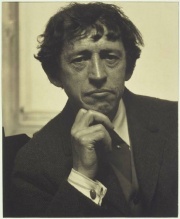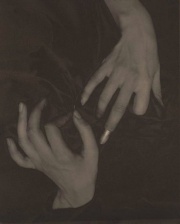Difference between revisions of "Palladium"
m (Text replace - "== Authority ==" to "== Sources Checked for Data in Record ==") |
|||
| Line 3: | Line 3: | ||
A silvery-white, metallic element. Palladium occurs in trace amounts in [[gold]], [[nickel]], [[platinum]], and [[copper]] ores. Palladium was isolated in 1803 by an English chemist named William Hyde Wollaston. It is mined in Siberia, the Ural Mountains, Ontario, and South Africa. Palladium is soft, ductile, and malleable. It is resistant to tarnishing and unaffected by acids and pollutants. Palladium is alloyed with gold to form white gold. It is used for electrical contacts, jewelry, dental crowns, and surgical instruments. | A silvery-white, metallic element. Palladium occurs in trace amounts in [[gold]], [[nickel]], [[platinum]], and [[copper]] ores. Palladium was isolated in 1803 by an English chemist named William Hyde Wollaston. It is mined in Siberia, the Ural Mountains, Ontario, and South Africa. Palladium is soft, ductile, and malleable. It is resistant to tarnishing and unaffected by acids and pollutants. Palladium is alloyed with gold to form white gold. It is used for electrical contacts, jewelry, dental crowns, and surgical instruments. | ||
| + | |||
| + | In photography, the palladiotype is a less-common variant of the platinotype. Tfter World War I, the rising cost and the consequent shortage of commercial platinum paper, resulted in photographers using the much cheaper palladium to produce similar effects. The cost of palladium also started to rise and eventually around 1930 the process was abandoned in favor of more economical alternatives. | ||
| + | |||
| + | Characteristics of a palladium print, compared to a platinum print, are a warmer tone, a large tonal range (up to D= 2.1) with deeper blacks and a softer image with delicate highlights (Wikipedia 2020). | ||
[[File:24.1728-SC48584.jpg|thumb|]] | [[File:24.1728-SC48584.jpg|thumb|]] | ||
| Line 45: | Line 49: | ||
== Sources Checked for Data in Record == | == Sources Checked for Data in Record == | ||
| + | |||
| + | * Wikipedia, [https://en.wikipedia.org/wiki/Platinum_print Platinum print] | ||
* G.S.Brady, ''Materials Handbook'', McGraw-Hill Book Co., New York, 1971 Comment: p. 571 | * G.S.Brady, ''Materials Handbook'', McGraw-Hill Book Co., New York, 1971 Comment: p. 571 | ||
Revision as of 11:35, 29 February 2020
Description
A silvery-white, metallic element. Palladium occurs in trace amounts in Gold, Nickel, Platinum, and Copper ores. Palladium was isolated in 1803 by an English chemist named William Hyde Wollaston. It is mined in Siberia, the Ural Mountains, Ontario, and South Africa. Palladium is soft, ductile, and malleable. It is resistant to tarnishing and unaffected by acids and pollutants. Palladium is alloyed with gold to form white gold. It is used for electrical contacts, jewelry, dental crowns, and surgical instruments.
In photography, the palladiotype is a less-common variant of the platinotype. Tfter World War I, the rising cost and the consequent shortage of commercial platinum paper, resulted in photographers using the much cheaper palladium to produce similar effects. The cost of palladium also started to rise and eventually around 1930 the process was abandoned in favor of more economical alternatives.
Characteristics of a palladium print, compared to a platinum print, are a warmer tone, a large tonal range (up to D= 2.1) with deeper blacks and a softer image with delicate highlights (Wikipedia 2020).
Synonyms and Related Terms
Pd; palladium (Fr.); palladio (It.); Paládio (Port.); paladio (Esp.); Palladium (Deut.); palladium (Ned.); paládio (Port.)
| Composition | Pd (atomic no. 46) |
|---|---|
| CAS | 7440-05-3 |
| Mohs Hardness | 4.8 |
| Melting Point | 1554 |
| Density | 12.02 |
| Molecular Weight | atomic wt = 106.4 |
| Boiling Point | 3167 |
Hazards and Safety
Noncombustible except as dust.
Fisher Scientific: MSDS
Additional Information
Web Elements: Website
Sources Checked for Data in Record
- Wikipedia, Platinum print
- G.S.Brady, Materials Handbook, McGraw-Hill Book Co., New York, 1971 Comment: p. 571
- Ralph Mayer, A Dictionary of Art Terms and Techniques, Harper and Row Publishers, New York, 1969 (also 1945 printing)
- Chemical & Engineering News, American Chemical Society, Washington DC, 81 (36) , Sept. 8, 2003 Comment: Larry Overman, p. 116

